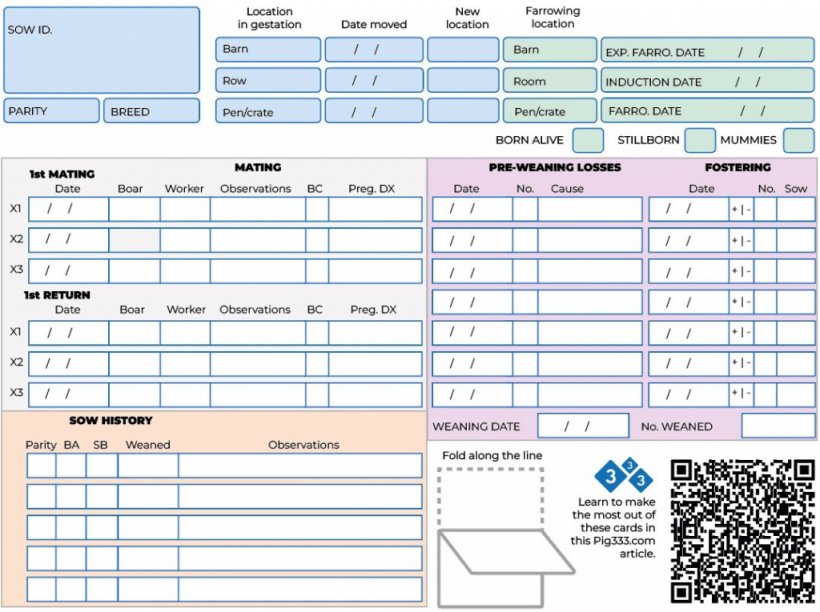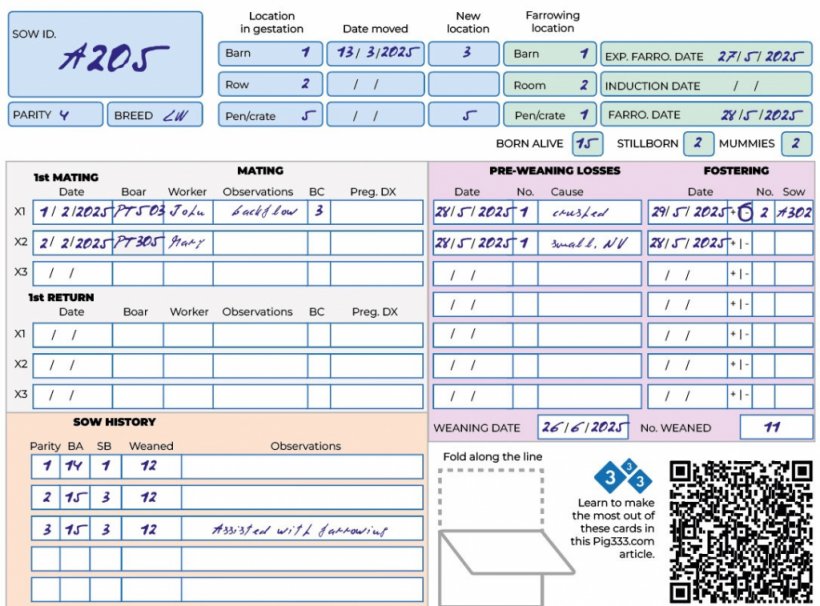Good data recording allows us to plan activities and analyze results, and it is very helpful in assessing possible causes of problems.
The vast majority of swine management softwares have their own sow cards, but for the farms that do not work with these softwares or for those that prefer a different option, we provide an example here of a sow card that could be used as a reference.


There should be different sections on the sow card:
Identification and location
|
Insemination/mating data
|
Sow history
|
Farrowing information:
|
Farrowing Information
|

Example:
The animal's identification indicates that it is sow A205, 4th parity, and its breed is Large White.
Regarding its location, the sow was located in barn 1, row 2, pen 5, and was moved on 13/03/25 to barn 3 and pen 5. (Note: Moving sows at certain points in their cycle may affect reproductive results).
The sow was inseminated by John on 1/02/2025 with boar PT 503 and had some backflow. Its body condition was 3. The next day, Susan inseminated the sow with a dose from boar PT 305.
Looking at its history we can see:
- She has had many stillborn piglets.
- In her last farrowing, she needed assistance to farrow.
- She has never weaned more than 12 piglets.
Her expected farrowing date is 27/05/2025. We calculate her farrowing date considering a gestation length of 114 days from her last mating since it is the closest to her ovulation date. Gestation length can vary from farm to farm but can occur normally 113 to 120 days after mating.
Inducing farrowing is a tool that should be carefully evaluated (see the article "To induce or not to induce; has the answer changed?").
She farrowed on 28/05 and had 15 born alive, 2 stillborn, and 2 mummies.
On 28/05 there were two piglet losses, one from crushing and one of a small, non-viable piglet. Accurate recording of causes of death is essential for effective corrective action.
They took two piglets off the sow on 29/05 which were fostered by sow A302.

The back side of the sheet is used to record how farrowing progresses. Accurate notes help us know whether intervening in the farrowing is necessary. The caretaker, seeing that the sow has not farrowed any piglets in 30 minutes and assessing her history of stillbirths, decides to assist with the farrowing.
Treatments and vaccinations must be registered to ensure that they have been carried out on the corresponding date and to strictly control the withdrawal time of the medications (the days that must pass from the administration of a product until the animal can be marketed).
333 Staff




